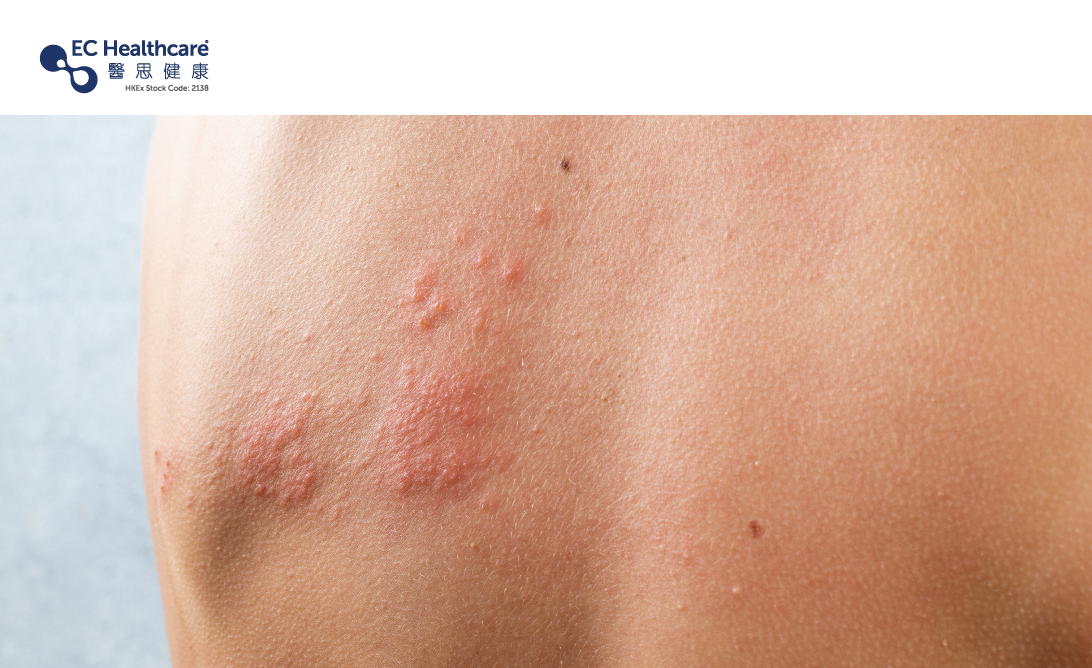Out of 7 Elderly Individuals, 2 May Develop Shingles? Safeguard Your Health by Receiving Shingles Vaccine!


Shingles, also known as zoster or herpes zoster, belongs to the same family as the varicella-zoster virus, which causes chickenpox. After recovering from chickenpox, the virus remains dormant in the body. It can reactivate when the person's immune system weakens, leading to the onset of shingles. It is estimated that 97% of adults in Hong Kong have been infected with chickenpox. The chances of developing shingles significantly increase for individuals aged 50 and above. Therefore, it is recommended to get vaccinated promptly to protect one's health.

The Severity of Shingles
Shingles can appear on any part of the body. It commonly affects the abdomen, back, chest, buttocks, extremities, face, and neck. It manifests as a burning or electric shock-like sensation, accompanied by the development of a rash and blisters. Eventually, the blisters crust over and heal. The entire course of shingles typically lasts for about 2 to 4 weeks.
Even after the rash and blisters have scabbed and healed, it does not signify the end of the condition. The most dreaded aspect of shingles is its potential to cause post-herpetic neuralgia. Approximately 30% of patients experience persistent nerve pain following a shingles outbreak, which can significantly impact sleep, mood, and daily activities. In some cases, this condition can persist for a lifetime, requiring long-term use of pain medication to alleviate the discomfort.
Furthermore, shingles, being an inflammatory condition, can increase the risk of complications such as acute viral encephalitis, stroke, facial paralysis, ophthalmic involvement (eye-related complications), and pneumonia. These complications can be severe and, in some cases, lead to fatality.
2 Out of 7 Elders Will Develop Shingles?
Recent local analyses and studies have revealed that without widespread vaccination, among individuals aged 50 or above, approximately 2 out of 7 individuals will develop shingles. Additionally, among every 20 individuals, 1 person will experience post-herpetic neuralgia, and among every 100 individuals, 1 person will develop ophthalmic involvement (shingles affecting the eye).
Furthermore, research has indicated that over 50% of individuals aged 60 or above, as well as those who have previously had shingles, experience post-herpetic neuralgia lasting longer than 6 months. Currently, there is no complete cure for shingles, and even after recovery, there is a possibility of shingles reactivating if the immune system weakens again after a certain period.
To prevent shingles and the subsequent development of post-herpetic neuralgia, the most effective method is to receive vaccination against shingles (shingles vaccine).
Types of Herpes Zoster Vaccine (Shingles Vaccine)
Vaccine Type | Recombinant Vaccine (Next Generation) | Live Attenuated Vaccine (Traditional) |
Suitable Age | Age 50 and above High risk individuals aged 18 and above | Age 50 and above |
Administration | Intramuscular injection | Subcutaneous injection |
Vaccine Composition | Contains non-live recombinant antigens and adjuvants | Contains weakened (attenuated) virus |
Number of Doses | 2 doses, spaced 2-6 months apart | Single dose |
Overall Protection against Shingles | Over 90% Age 50-59: 97% Age 80 and above: 91% | About 50% Age 50-59: 70% Age 80 and above: 18% |
Overall Protection against Post-Herpetic Neuralgia | 89%-91% | 65%-66% |
According to the recommendations of the U.S. Centers for Disease Control and Prevention (CDC), individuals aged 50 and above, as well as those aged 18 or above with high-risk factors, should receive two doses of the shingles vaccine. It is important to note that currently, the Hong Kong government does not provide free or subsidized shingles vaccination. Citizens will need to visit private healthcare facilities to receive the vaccine.
*Information provided by GSK







